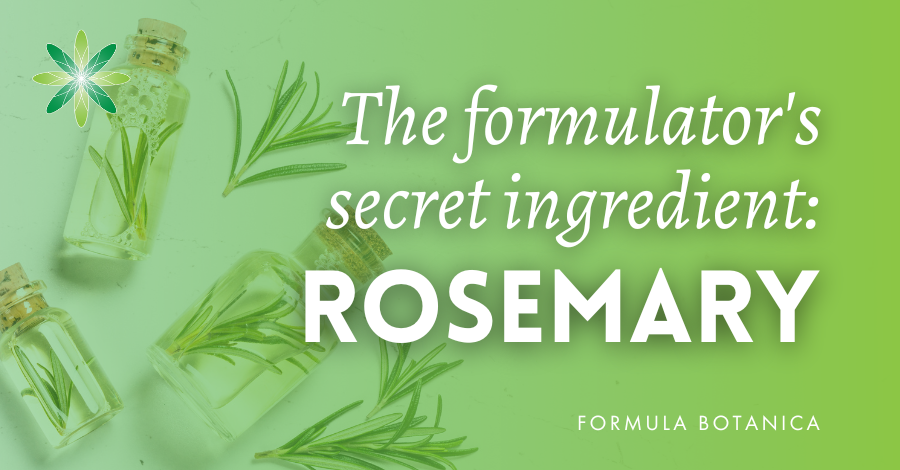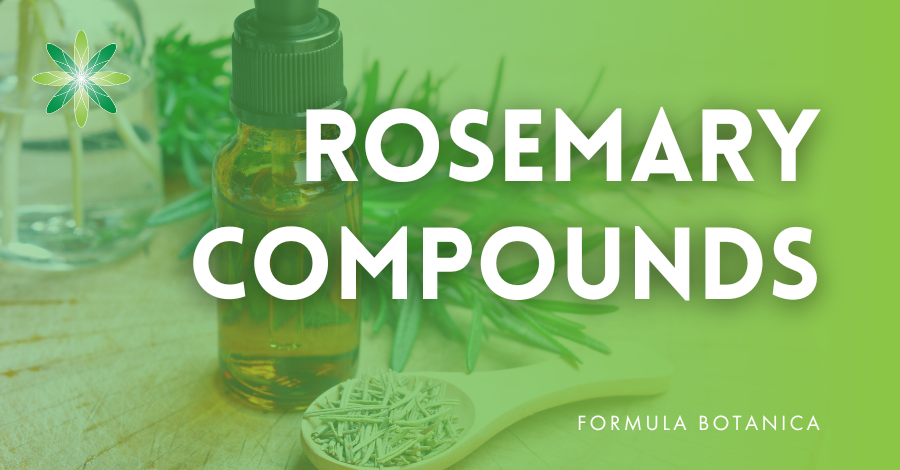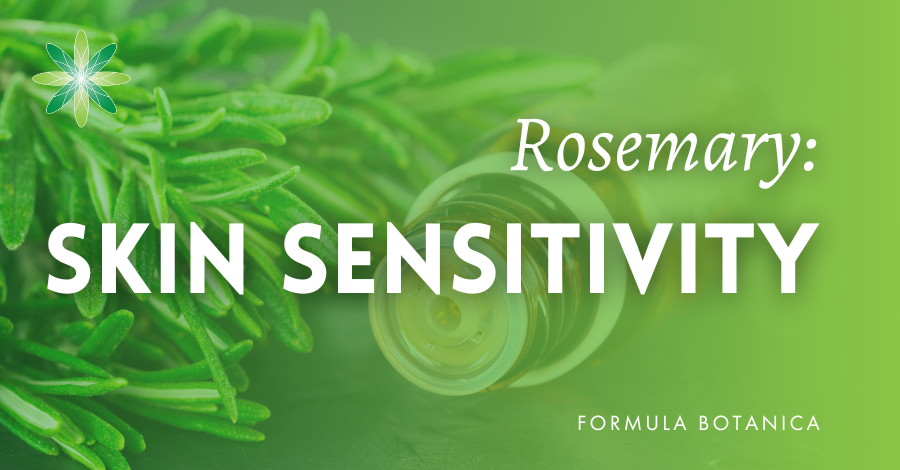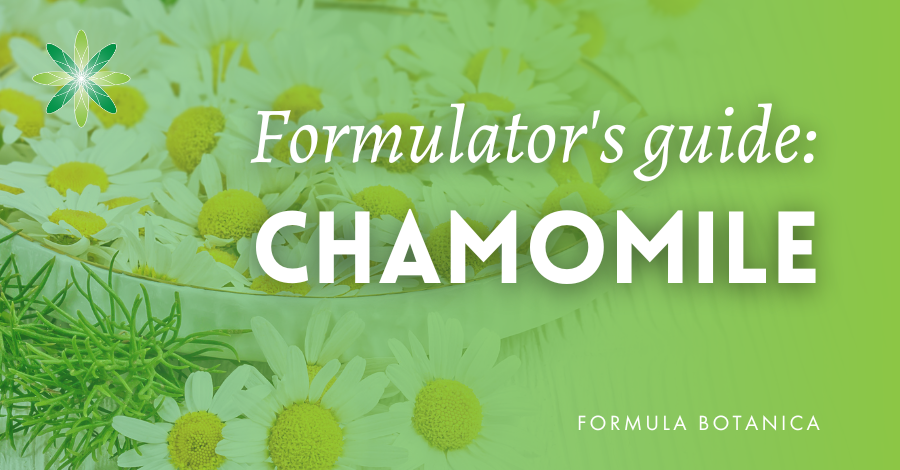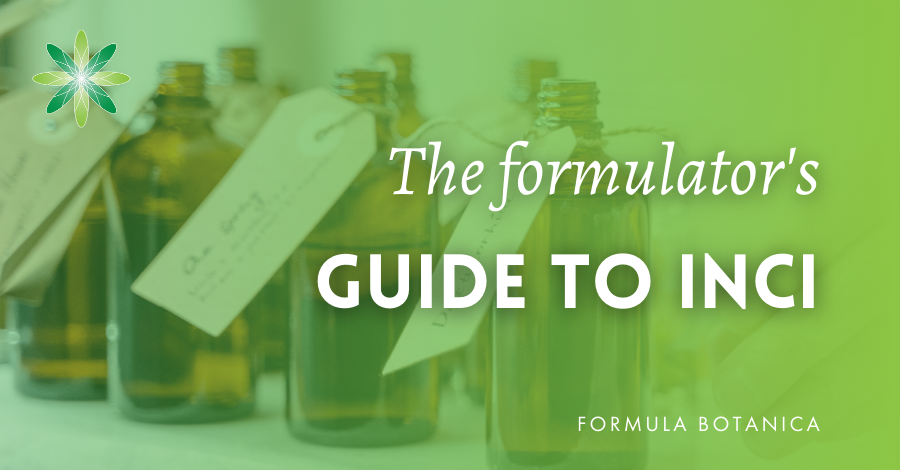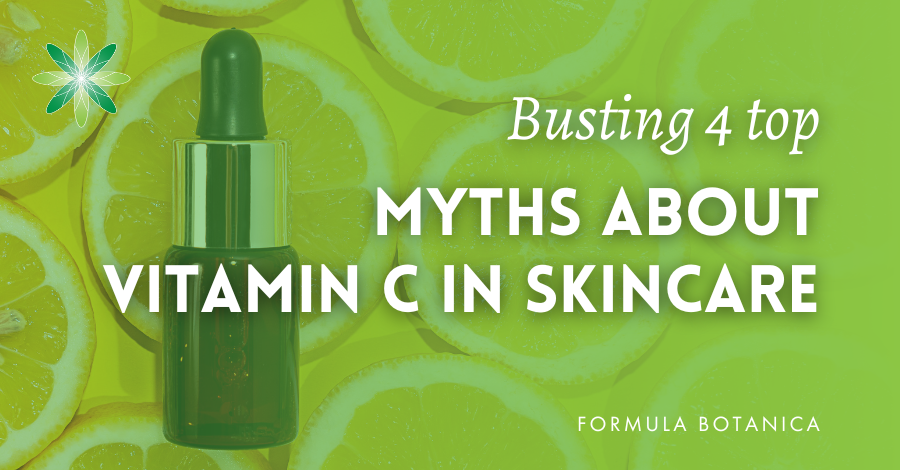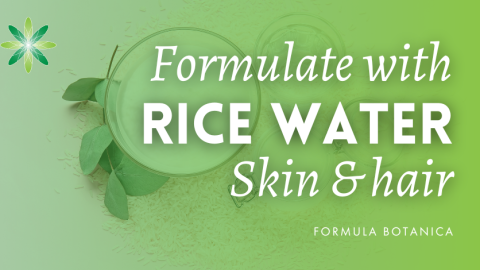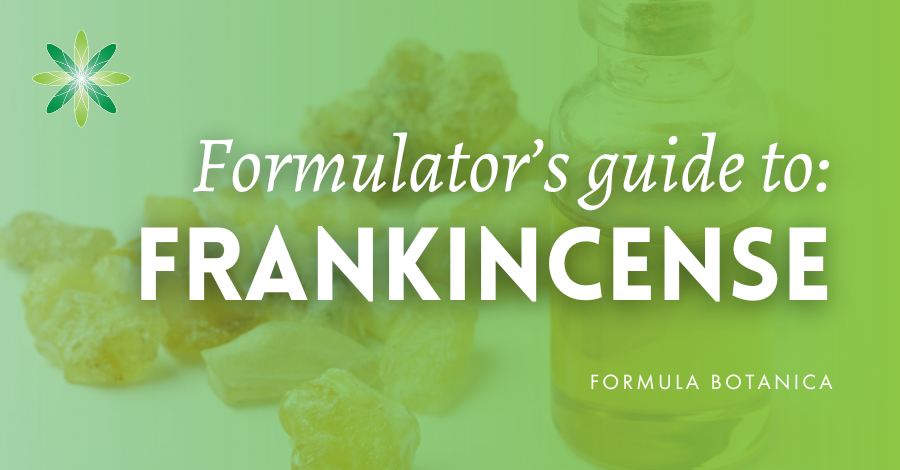As an organic formulator, you will be familiar with using rosemary in your formulations as an antioxidant. But this common garden herb is now enjoying a high profile as a trending cosmetic ingredient that offers numerous benefits for both skincare and haircare.
Rosemary epitomises why so many of us want to learn to formulate organic cosmetics at home. We love the fact that such useful and beautiful garden herbs like rosemary seem almost plucked straight from nature for use in our cosmetics. Many Formula Botanica students love experimenting with, and making, their own herbal macerates and glycerites for this very reason. If you wish to sell your cosmetics, you would need cosmetic-grade extracts with safety data sheets so using your own homemade herbal extracts might not be possible then. But, the idea of using the herbs that we are familiar with in our gardens and countryside is what makes botanical formulation so appealing.
What we particularly love about rosemary is its long history in cosmetics, dating back thousands of years. In this article, we look briefly at its history and then do a deep dive into its chemical properties of benefit to cosmetics, as well as cover some important points about formulating with rosemary extracts safely and effectively.
A brief history of rosemary in natural cosmetics
Rosemary has been used for centuries in traditional medicine and beauty practices. First mentioned on cuneiform tablets around 5000 BC, rosemary was used by Ancient Egyptians, Greeks and Romans for its healing and cosmetic properties. The Romans probably introduced it to Northern Europe.
By the Middle Ages, there was evidence of rosemary being used to combat hair loss and “improve memory”. The connection between rosemary and memory has several interpretations. Apparently, Greek scholars would wear rosemary garlands to keep them alert during exams. Rosemary was used in ancient funeral rites, hence its association with holding on to memories of the dead. It is certainly a herb that has a long history of use as a natural, folkloristic remedy for acne, eczema, and other skin conditions.
The Europeans probably spread rosemary to the so-called New World with their voyages in the 16th and 17th centuries. Now, this drought-resistant, pinnate-leaved herb, a native of the Mediterranean and Asia, is found growing in temperate climates across the world.
Chemical compounds of rosemary
Rosemary contains a variety of chemical compounds that make it useful in skincare and haircare formulations. It contains a number of powerful antioxidant compounds including carnosic acid, rosmarinic acid and caffeic acid; this last compound is especially interesting to us as cosmetic formulators.
Caffeic acid is a hydroxycinnamic acid, which is a group of acids from a class of antioxidant compounds known as polyphenols. It is a potent antioxidant and synthesised by, and found in trace amounts in almost all plants, but found in greater amounts in some, such as coffee beans, olives and herbs like rosemary, oregano and cilantro.
Benefits of rosemary for skincare and haircare
As it is rich in antioxidants, cosmetic extracts of rosemary can help to protect the skin and hair from free radicals and environmental stressors that can cause the visible signs of premature skin ageing and damage hair.
Rosemary also has anti-inflammatory properties. This makes rosemary extracts particularly useful ingredients in cosmetics formulated for those with sensitive or irritated skin or scalp conditions, as well as in deodorants and foot soaks and balms.
In haircare, rosemary has been shown to improve circulation to the scalp, which may promote hair growth and improve the overall health of the hair. It is also a natural astringent, which can help to balance oily hair and scalp.
These astringent properties also mean rosemary can help tighten and tone the skin and scalp. This makes it a good choice for those who want to improve the appearance of dull skin or hair.
In addition, rosemary contains natural antimicrobial and antifungal properties. This makes it a useful ingredient in facial cleansers or shampoos for those who are prone to breakouts or scalp issues.
Finally, rosemary has a refreshing and invigorating scent. This is why it’s often used in shower and bath preparations and aromatherapy products like massage oils or room sprays.
Forms of Rosemary for Skincare and Haircare
There are numerous cosmetic extracts of rosemary created from the leaves, flowers and stems – or the entire plant – and our list below doesn’t even include any of the individual cosmetic compounds found in rosemary that we mentioned above. Some of the different cosmetic ingredients derived from rosemary (Rosmarinus officinalis) include:
Rosemary essential oil – this highly concentrated oil is extracted from the leaves and flowers of the rosemary plant. It is often used in aromatherapy and skincare formulations for its invigorating scent.
Rosemary CO2 extract – similar to the essential oil but using CO2 to extract the rosemary compounds. This is a dark brown, highly viscous ingredient and generally the form we use as an additional antioxidant (at around 0.1%) in cosmetic formulations. It is oil soluble, usually diluted in a carrier like sunflower, and can contain residual traces of ethanol.
Rosemary oleoresin – this can be produced by first making a tincture or extract with other volatile solvents, then evaporating the solvent to leave only the oleoresin behind. The oleoresin is a highly viscous form that may need warming in a water bath / bain marie to make fluid enough to handle.
Rosemary hydrosol – this is a by-product of the steam distillation process used to extract essential oil from rosemary. It has a milder scent than the essential oil and can be used as a facial toner or hair rinse.
Rosemary infused oil – this is produced by macerating dried, chopped rosemary plants into a suitable carrier oil such as sunflower, grapeseed or sweet almond oil.
Rosemary tincture – similar to the infused oil, but using alcohol as the macerate carrier.
Rosemary leaf powder – these can be found in different forms, including: a plant powder, which is the dried plant ground up until it becomes a powder; and a powdered extract made by drying a solvent-based extract.
Rosemary flower wax – these waxes are by-products of the production of absolutes. Similarly, we find flower waxes from plants like jasmine or lavender. See our post on vegan waxes to learn more about these.
Using Rosemary in Skincare and Haircare Formulations
When using rosemary in skincare and haircare formulations, it is important to consider the specific needs of your product and your target audience. Here are some tips to help you get started:
Consider the form of rosemary that is best suited to your product. For example, the essential oil is highly concentrated and should be used sparingly, while dried rosemary may be used more liberally but is suited to products offering gentle exfoliation.
Use rosemary in combination with other ingredients that complement its benefits. For example, rosemary can be combined with tea tree oil for its astringent effects, which may be desirable in skin toners or in products directed to acne-prone skin. Rosemary essential oil combined with lavender oil offers a calming effect.
Experiment with different concentrations of rosemary to find the right balance for your product. Too much rosemary can be irritating to the skin, while too little may not provide the desired benefits. Let’s take a look next at rosemary as a skin sensitiser.
Rosemary and skin sensitivity: things to consider
While rosemary oil has many benefits for the skin and hair, there are some potential issues to be aware of when using it in cosmetics. One of the main concerns with rosemary oil is its potential to cause skin irritation and allergic reactions. This is due to the presence of certain chemical compounds in the oil, such as camphor, pinene, and eucalyptol. Certain chemotypes of rosemary contain the EU-identified allergens linalool and limonene.
All these compounds can be irritating to sensitive skin or cause an allergic reaction in some individuals. When formulating with rosemary extracts, ask your ingredient supplier to provide the safety data sheet and allergen breakdown of the rosemary ingredient.
While there is no stipulated limit to using rosemary in a formulation, the limits will be determined by the total percentage of any potential allergenic compounds within your chosen rosemary extract and the rest of your formulation.
The Cosmetic Ingredient Review (CIR) Expert Panel evaluated the safety of some 10 rosemary-derived ingredients used in cosmetics primarily as fragrances and/or antioxidants. It determined that they are safe for use in cosmetic products when formulated to be non-sensitising. The CIR is an independent organisation that assesses the safety of ingredients used in cosmetics in the United States.
However, the body emphasised that “…because final product formulations may contain multiple botanicals, each containing similar constituents of concern, formulators are advised to be aware of these constituents and to avoid reaching levels that may be hazardous to consumers.” This means that cosmetic formulators must assess the individual allergen compounds within any given extract and also be aware that other ingredients in their formulation may contribute to the total of the allergens.
How Rosemary Extracts Can Help Extend Product Shelf Life
Rosemary CO2 and oleoresin extracts are natural antioxidants that help slow the oxidation process, which can cause cosmetic products to degrade, become discoloured, or develop an unpleasant odor – all factors that lead to product instability and the potential for the product to become unsafe for use. Let’s look at how rosemary extract works as an antioxidant.
These rosemary extracts contain a group of compounds called phenolic acids, which have antioxidant properties. These compounds are able to donate an electron to unstable free radicals, stabilising them and preventing them from causing further damage to the product.
Some phenolic acids are also able to present chelating properties and chelate metal ions, such as iron and copper, which can catalyse the oxidation process. By binding to these metal ions, phenolic acids prevent them from initiating the oxidation process.
Rosmarinic acid, another compound in rosemary, has been shown to have antimicrobial properties. By inhibiting the growth of bacteria and yeasts, rosmarinic acid can prevent spoilage and extend the shelf life of the product.
Finally, rosemary’s carnosic acid has been shown to be a more effective antioxidant than vitamin E. Carnosic acid can also protect against UV-induced oxidative stress, which can cause the degradation of cosmetic products.
A little of these rosemary CO2 and oleoresin extracts go a long way as an antioxidant. Generally, we include rosemary antioxidant extracts at just 0.1% in a typical cosmetic formulation, such as an emulsion or anhydrous product.
Rosemary in cosmetics: conclusion
Rosemary is a versatile herb that can provide a range of benefits for the skin and hair. It may be common in many natural, organic cosmetics as an antioxidant to stabilise and prolong the shelf life of the product, but rosemary has so much more to offer our skincare and haircare formulations.
Its antioxidant and anti-inflammatory properties make it useful in skincare formulations, while its ability to improve scalp circulation may promote hair growth and improve the overall health of the hair. By experimenting with different forms and concentrations of rosemary, you can create effective and natural skincare and haircare products that your customers will love.
If you’d like a quick pictorial tour of rosemary, see our Instragram mini-series on rosemary which summarises much of our article here in a bite-sized and fun way.
Further reading
Caroline M Spagnol et al, (2017): Caffeic Acid in Dermatological Formulations: In Vitro Release Profile and Skin Absorption.
C. Magnani et al. 2014. Caffeic acid: a review of its potential use in medications and cosmetics.
Aleksandar Rašković et al., 2014: Antioxidant activity of rosemary (Rosmarinus officinalis L.) essential oil and its hepatoprotective potential.
Cosmetics Ingredient Review Panel (CIR): Safety review of rosemary extracts
FREE TRAINING
Learn how to become an
Organic Skincare Formulator
FREE TRAINING
How to become an
Organic Skincare Entrepreneur
FREE TRAINING
How to become an
Organic Skincare Entrepreneur
Leave us a comment

Liz was Formula Botanica’s Content Coordinator between August 2020-2024. Liz worked as a professional blogger, journalist and site developer for many years and was also part of the Formula Botanica student community. Read more about the Formula Botanica Team.

